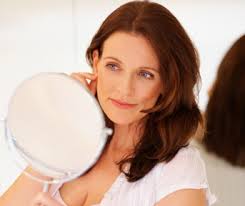
We all have varying degrees of fat in our faces and a multitude of factors can cause changes to these fatty compartments. Volume loss occurs because of gradual changes in the appearance of the fat. There is a loss both superficially and at a deeper level that comes along with aging.
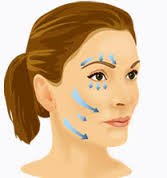
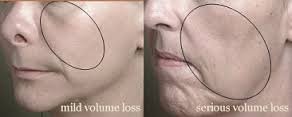
1. Yo-Yo Dieting And Extreme Exercising
Keeping fat off your body is no easy task since the body can’t be told where to lose weight from and where to keep it. So even if you want to “spot-treat” a specific part of the body, you may end up reducing the amount of fat in your face as well. The ups and downs of recurrent dieting cause a stretching of the ligaments that support the tissues of the face. This can result in a loss of elasticity and volume, which promotes an aging effect.
2. Excessive Sun Exposure
Although fat loss is not directly dependent on UV rays, it is important to protect your skin from the sun. If you don’t wear SPF daily, the sun will accelerate the breakdown of collagen and elastin in the skin. When collagen and elastin levels are of poor quality, the condition of the skin is affected and the loss of fat can be accentuated.
3. Hormonal Changes
Female hormones, especially estrogen, are partially responsible for changes in the amount and quality of fat. As hormone levels begin to dip, fat can start to thin out.
4. Too Thin Of A Frame
It is possible to be too skinny. When that’s the case, the aging process will become even more of your enemy than your friend. The reason: A naturally thin face has little natural fat to begin with and over time the inherent amounts of fat begin to diminish, causing an extremely haggard look.
5. Receding Bones
With age, we naturally lose bone mass in the face. The muscles also begin to atrophy to some degree. These changes alter the underlying structure of the face and can cause the cheekbones and midface to look collapsed (the effects usually don’t take hold until later in life). It’s noticeable in the 70- to 80-year-old patient and while it’s highly variable, the majority of resorption happens around the nose and in the central face.
At the office of Dr. Mark Bishara and The Paragon Plastic Surgery & Med Spa we provide a wide range of cosmetic procedures to help patients look and feel their best, including injectables and fillers. These procedures are designed to improve the appearance of volume loss through minimally invasive techniques. Minimally invasive procedures offer patients the results they desire without the hassle and lengthy downtime often associated with cosmetic surgery procedures. We offer patients Botox, Xeomin, Radiesse, Juvederm Ultra Plus XC and the NEW Juvederm Voluma to help reduce or eliminate the signs of aging on their face. Please call our office to see which product would be best for you at (817) 473-2120 or visit our website at www.MarkBisharaMD.com for more information on these.
Aside from being the largest organ of the human body, skin is also the only organ continually exposed to the surrounding world, interacting with the environment and reflecting the general health condition and age changes.
How Skin Ages
Understanding the mechanisms by which the skin ages has been increasing significantly, along with considerable progress on the way to prevent and reverse the visible signs of aging. However, there are still several mysterious factors concerning aging process and why we all appear to age differently. Aging of the skin is likely caused by both intrinsic (biologic) ‘intrinsic aging’, and extrinsic aging (environmental) factors ‘extrinsic or photoaging‘; these factors are interconnected and may share a final common pathway. The quality of skin features is greatly affected by aging, as skin ages, it tends to become roughened, lax and wrinkled with some pigmentary changes.
The main feature of photodamaged skin is solar elastosis; with accumulation of elastotic material in the dermis. Meanwhile, photoaged skin shows gradual decrease in collagen content. Additionally, collagen becomes disordered with decreased synthesis and enhanced breakdown. These changes contribute to the skin laxity and wrinkling formation.
Skin Rejuvenation
Besides being an art, facial rejuvenation is a developing science. Patients now routinely present to their physician requesting information on improving the signs of facial aging; it is the physician’s responsibility to select the most appropriate intervention(s) based on the patient’s age, physical needs and concerns, extent and location of volume loss and cosmetic goals. Different therapeutic approaches were used throughout the years to give the face a youthful appearance. However, because each person is unique, there is no one modality that is best for everyone. Therefore, to choose the most appropriate therapy, distinctions must be done between rhytides caused by loss of collagen within the dermis, wrinkles due to volumetric loss of fat, redundant folds created by gravitational pull and those caused by hyperfunctional facial muscles.
For ease of patient education, the treatment options for addressing these changes may be simplified into five categories, often referred to as the ‘5 Rs (Redraping, Resurfacing, Retaining, Relaxing and Refilling) of skin rejuvenation: surgically Redraping and lifting redundant tissue; Resurfacing photoaged skin with ablative or non-ablative technologies whether physical, chemical or mechanical; Retaining with skin care; Relaxing dynamic rhytides that are due to hyperfunctional muscles with neurotoxins and Refilling of diminished subcutaneous tissue by restoring 3D volume.
Ablative and Non-Ablative Procedures
Although ablative modalities remain the gold principle for photodamaged skin rejuvenation, its use is associated with risk of side effects as well as a prolonged and an unpleasant post-treatment ‘downtime’ and recovery period. Thus, interest in ablative treatment has waned considerably while non-ablative modalities as well as fractional skin rejuvenation have become appealing alternative treatments.
New perspectives in non-ablative skin rejuvenation treatments have been established with the development of new technologies and techniques, which are used to rejuvenate skin with minimal downtime and complications. Many different terms have been used to describe these procedures including: subsurface resurfacing, laser toning and minimally invasive skin rejuvenation. These modalities are designed to produce many cosmetic benefits, including improvement of wrinkles, skin laxity and texture.
Beside lasers and various in-office procedures, many topical skin care agents were used for prophylaxis as sun screens and for rejuvenation such as retinoic acid and different anti-oxidants including vitamins C and E, co-enzyme Q10 and green tea.
Choosing the appropriate treatment modality which will be the key to success in skin rejuvenation depends on careful evaluation and determining the patient’s needs, skin type and condition, to frame a treatment plan. Good candidates for minimally invasivetechniques tend to have minimal facial sagging. Patients should understand that skin texture will improve and fine lines will be softened but not eradicated. Cumulative aesthetic benefits will occur gradually and will be less dramatic than those seen with ablative resurfacing. Patients with Fitzpatrick skin type III or less are generally best candidates for different procedures with minimal risk of complications.
Goals of Minimally Invasive Treatments
The goal of most minimally invasive treatments is to induce selective dermal injury which results in wound repair response; while keeping the overlying epidermis intact. In response to the induced dermal injury, the healing process begins to stimulate the fibroblast with deposition and reorientation of collagen bundles. Such modalities for skin rejuvenation could be classified into two types, the first relates to treatment of ectatic vessels, pigmentation and pilosebaceous changes, while the second refers to dermal remodeling with wrinkle reduction and/or skin tightening.
Dr. Mark Bishara, whith office in Mansfield and Southlake, TX- provides a wide range of cosmetic procedures to help patients look and feel their best. These procedures are designed to improve the appearance of the face and body through minimally invasive techniques that provide highly effective results. Many of these procedures can be combined in order to achieve your desired appearance. All of our procedures are performed using the most advanced, state-of-the-art equipment.
At our office we offer many treatments that are ablative as well as non-ablative. Our Pragon Med Spa offers many laser services- skin tightening, skin resurfacing, as well as peels and microdermarbrasion. Our office also offers Botox, Juvederm and Radiesse. The new Juvederm Voluma XC will be coming soon. Please call our office for more information at (817) 473-2120.
Choosing Your Tools
While today’s HA fillers are all non-animal sourced and stabilized, they do have some important differences, including the manner in which the molecules are cross-linked, the particle size and their affinity to bind water (hydrophilic properties). These distinctions determine a filler’s hardness or resistance to deformation. Picture squirting out the contents of a tube of toothpaste. If the paste retains its shape without flattening, the material reflects a high G prime; a runny liquid that rapidly loses its peak formation has a low G prime.
Restylane (Medicis, restylaneusa.com) demonstrate stiffer qualities, which translates to a higher lift capacity. The stiffer quality of these fillers provides not only lift but also structural support. These would be more suited for creating a cheekbone, increasing chin projection or temple lifting.
Other fillers, like Juvederm (Allergen, juvederm.com), are softer materials that are ideal for filling lips, nasolaboial folds and finer lines.
Juvederm, one of the more hydrophilic fillers, is a popular tool for imparting a soft shape around the lips but is not as well suited for treatment around the eyes. Restylane, which is not quite as hydrophilic, might work better for treating the tear troughs and the nasojugal folds.
For defining the border around the lips or filling fine lines, both Restylane and Juvederm are good choices. Many physicians prefer the softness of Juvederm for filling the lip.
Collagen-Stimulating Volumizers
While HA fillers are a top choice for specific indications, such as fine lines and icepick acne scars, collagen-stimulating fillers, such as Radiesse (Merz Aesthetics, radiesse.com) and Sculptra (Valeant Aesthetics, sculptraaesthetic.com), can help create volume across a larger region with results extending to 24 months or longer.
The stiffer quality of these fillers provides not only lift but also structural support.
Managing Complications
With modern HA fillers, the potential for allergic reactions is very low, and no skin testing is necessary. That said, injecting fillers can yield potentially significant complications if not managed properly.
The most common complications are bruising and swelling at the injection site, which can last up to a week. To reduce bleeding and bruising, ask patients if they are taking any anticoagulant medications or supplements, including ibuprofen, aspirin, fish oil, omega-3, vitamin E and herbal supplements, including ginkgo biloba, as these may induce more bleeding.
Another common problem is injecting too much of a product or injecting into the wrong plane. HA fillers are somewhat forgiving in that you can use the enzyme hyaluronidase to dissolve the HA when patients are not pleased with the results. This not true with non-HA fillers, such as Radiesse, Artefill and Sculptra.
The Future Of Fillers- Juvederm Voluma XC
Though dermal fillers have been part of cosmetic medicine for almost 30 years now, there are still some truly innovative materials entering the market. Voluma XC (Allergan, allergan.com), an HA filler, will soon offer U.S. patients effects that last 18 months or more and a high G prime for more lift and fill with less product.
JUVÉDERM VOLUMA™ XC injectable gel is the first and only filler FDA-approved to instantly add volume to the cheek area. Juvederm Voluma is the Juvederm specialty product for volumizing. It is designed for injection in the deep dermis to treat age-related facial volume loss. Voluma has the optimal thickness of a volumizer while still retaining the smooth nature of the Juvederm family.
It gives you a subtle lift, helping to restore contour and for a more youthful profile, for up to 2 years, in patients over the age of 21. It’s different than JUVÉDERM® XC and works on a different area of the face. JUVÉDERM® XC smoothes out moderate to severe wrinkles and folds around the nose and mouth, like parentheses. JUVÉDERM VOLUMA™ XC, however, adds volume to the cheek area.
As new fillers continue to come to market, the trend toward specialized products that treat specific concerns and regions of the face continues to grow. In the future, physicians can look forward to a growing variety of materials that smooth, volumize and fill the skin with fewer complications and longer results than ever before.
Dr. Mark Bishara offers minimally invasive procedures, such as injectables- for patients. These treatments are designed to provide subtle enhancements that can improve your targeted problem areas, while allowing you to return to work and your regular activities the very same day. Dr. Bishara is proud to offer a wide range of enhancing, minimally invasive procedures such asBotox, Xeomin, Juvederm Ultra Plus XC and Radiesse. Juvederm Voluma XC will be available soon. We will keep you updated or call our office for more information at (817) 473-2120.
Good Skin Care in Your 20’s, 30’s and 40+
20’s: The Issue- Dullness
In-Office Fixes: Microdermabrasion and Chemical Peels
When you’re young skin cells turn over, exfoliating every 28 days. But as you move into your mid to late 20’s, that process starts to slow, and a natural decrease in skins sloughing ability. You’re left with a layer of dead skin that doesn’t evenly reflect light. Lunchtime procedures like microdermabrasion and chemical peels take less than and hour and leave behind only mild redness. During a microdermabrasion treatment, an aesthetician buffs away the top layer of skin. For maximum results, consider a series of 3 treatments, spaced apart- followed by a chemical peel. Microdermabrasion removes any build up and then the chemical peel makes skin look brighter and more toned evening out skin discoloration and tightening pores.
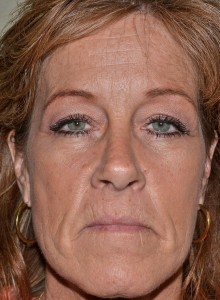
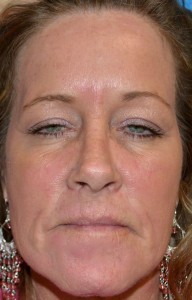
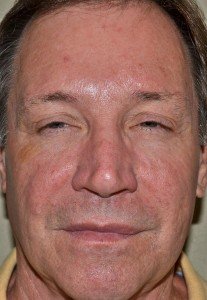
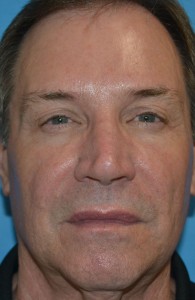
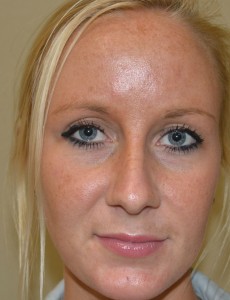
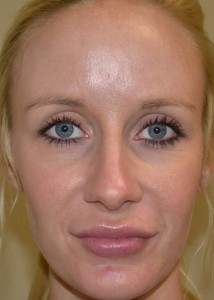
30’s: The Issues- Fine Lines, Redness and Sun Spots
In-Office Fixes for Fine Lines: Injectables such as Botox
Those little lines that used to disappear as soon as you stopped smiling or frowning are suddenly here to stay. Movements that cause skin to repeatedly crease in the same place eventually wear down the underlying collagen, creating lines that remain after muscles relax. Injectable muscle relaxers containing botulinum toxin A, such as Botox, Dysport and Xeomin, temporarily paralyze muscles so you can’t make those wrinkle-causing movements. Expect smoother skin 72 hours post-injection and results last 3-4 months on average. If you have no lines to speak of yet, these injections can be used as a preventative measure. Small doses can prevent muscle action so you’ll never get the creases to begin with.
**6.1 million people had Botox treatments performed in 2012**
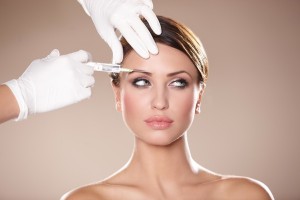
In-Office Fixes for Redness and Sun Spots: Laser Procedures
A rosy glow can be a sign of good health, but a constant ruddy complexion is a red flag. For some it’s a sign of sun damage. Excessive UV exposure weakens blood vessels until they no longer constrict after dilating. For others redness stems for rosacea, a condition marked by flushing, broken blood vessels and acne-like bumps. Other issues like brown spots are a sign of chronic sun damage triggered by overexposure of UV rays. Unlike freckles these marks don’t fade after reduced sun exposure- but they will get darker with even more.
An IPL-Fotofacial will target and treat unwanted discoloration, pigmentation, broken capillaries, age spots and sun damage. It also lessens the appearance of rosacea, fine lines and wrinkles. At The Paragon Med Spa our medical microdermabrasion also includes a chemical peel. Our Laser 360 treatment offer 3 technologies in 1 visit. The Laser 360 is meant to be done in a series of 3 treatments and produces optimal results. During this treatment a fotofacial, skin tightening and laser skin resurfacing are combined to offer the most comprehensive correction and rejuvenation. Bonus: Your skin will look tighter and feel smoother.
40+: The Issues- Sagging, Deep Creases and Hollowed Cheeks
Genetics and the effects of sun damage really start to show in this decade, as skin’s elasticity takes a nosedive. Sagging skin and crow’s feet that showed up in your 30s are probably more pronounced now. And due to natural volume loss, you may be noticing new wrinkles especially around the lips and in between the nose and corners of your mouth. With age, skin loses fat, exposing folds and creases.
In-Office Fixes for Sagging and Deep Creases
Fillers such as Juvederm instantly plump indentations. JUVÉDERM® Ultra Plus is used to treat deeper and more severe wrinkles and folds, and provides results that last up to one year. Injections take about 15 minutes to administer and do not require any anesthesia. Patients should avoid strenuous exercise and excessive sun exposure for the first 24 hours after treatment, but can otherwise resume normal activities right away.
In-Office Fixes for Hollowed Cheeks
Injectables such as Radiesse, reign supreme here too. Thicker fillers are ideal for filling out hollowed cheeks. Radiesse is a stiff material, so it’s good for replacing volume as well as lifting the skin. Radiesse provides an immediate fill plus long-term collagen stimulation for 18 months to two years.
Dr. Bishara provides a wide range of cosmetic procedures to help patients look and feel their best. These procedures are designed to improve the appearance of the face and body through minimally invasive techniques that provide highly effective results. Many of these procedures can be combined in order to achieve your desired appearance. Please call our office to schedule an appointment at (817) 473-2120 or click on the button below.

People always seem to be seeking treatment to reduce or eliminate the signs of aging on their face, hands and body. Minimally invasive procedures offer patients the results they desire without the hassle and lengthy downtime often associated with cosmetic surgery procedures. These treatments are designed to provide subtle enhancements that can improve your targeted problem areas, while allowing you to return to work and your regular activities the very same day.

Dr. Mark Bishara is proud to offer a wide range of dermal fillers and other enhancing, minimally invasive procedures in his Mansfield and Southlake offices.
Out of all minimally invasive procedures, BOTOX® Cosmetic is still the No. 1 non-surgical treatment performed in the U.S. after so many years. Why is this……because BOTOX works.
In our offices, patients are getting BOTOX treatments in record numbers. They want to look younger, healthier, and more vibrant. BOTOX can help patients achieve this at a reasonable price. These treatments work on patients of any age and with any skin type and have no downtime after treatment.
BOTOX can be used to relax the muscles of the face, temporarily erasing wrinkles on the forehead, between the brows, and around the lips, as well as laugh lines around the eyes. What’s more, studies show that when BOTOX is administered to younger patients, lines and wrinkles in those areas may be prevented altogether. There is definetely a trend of more BOTOX patients coming in their early and mid-20s.
The bottom line? New and improved treatments may come and go, but only a few will stand the test of time.
Sticking to a Schedule
It is important to stick to a schedule if patients want to get the most out of their Botox treatments. BOTOX can be great for quick rejuvenation if you decide that’s all you want, but its effects can also last longer if you maintain them.
There are many misconceptions regarding the most effective use of this injectable treatment. BOTOX is a great solution for women and men who may not be ready for facial cosmetic surgery and just want a little natural freshening. Even people who do proceed with actual cosmetic surgery benefit by BOTOX treatments afterwards to maintain the great results they got and make them last longer. At Dr. Bishara’s office you will receive a treatment plan based on your exact needs.
On average, the results of BOTOX appear within the first few days of treatment and last 3 to 4 months. The key to maximizing your results is planning in advance for your treatment sessions to occur every 3 to 4 months, just as the results are beginning to dissipate.
Injectable dermal filler treatments are also helpful as part of a patients’ personalized rejuvenation plans. Options such as JUVÉDERM® and RADIESSE® can enhance facial volume in key areas where we lose it with age, and thus restore youthful contours for a year, and they complement the results achieved with BOTOX.
We offer Botox weekly specials:
Wrinkle-FREE Wednesdays in our Mansfield office from 9am-5pm- Botox $10/unit
Wrinkle-FREE Rush Hour Thursdays in Southlake from 12pm-7pm- Botox $10/unit
At the offices of Dr. Mark Bishara and The Paragon Med Spa we would love to answer any questions you have regarding Botox and other fillers. To schedule an appointment with Dr. Bishara, please contact our office directly at (817) 473-2120.



